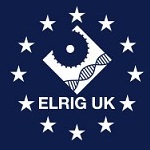Abstract
Degraders and the field of Targeted Protein Degradation offer a mechanistically differentiated way to modulate target proteins using small molecules. While a small molecule inhibitor will block or modulate a specific protein domain or function (for example an enzymatic role), a Degrader will knockdown the entire protein, removing all possible functions. Inhibition therefore does not always phenocopy degradation and careful assessment of potential targets for new Degrader development programs is vital. Target validation is therefore an important stage of the Degrader development project workflow. TAG degradation technology offers a generalizable strategy to degrade, in principle, any intracellular protein of interest (POI). Its key benefit is that it does not rely on the pre-existence of a ligand or PROTAC® for the POI. The broad applicability that it offers makes this a useful strategy for exploration and validation of targets, particularly in the context of new Degrader development programs. Here we present two case studies illustrating the dTAG workflow. We present data to demonstrate the value of testing both CRBN- and VHL-recruiting dTAG Degraders for each POI target as well as the use of negative control Degraders. We also show the utility of using a FKBP12 antibody for detecting POI∙dTAG fusion molecules, allowing for a more simplified procedure when probing multiple targets.

